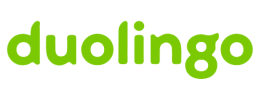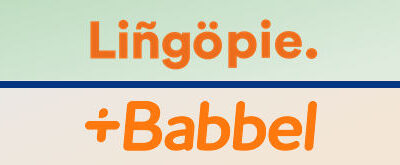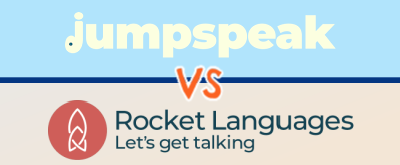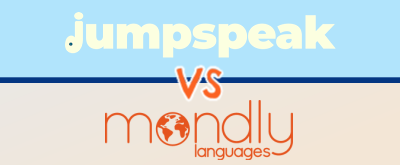Although Pimsleur and Duolingo are two of the most popular language learning apps on the market, they honestly couldn’t be more different in how their programs are designed. They are almost polar opposites in terms of methodology, language content, and delivery. In this guide, we break down how they work, and which we think is better.
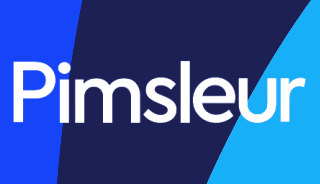
Free 7-Day Trial
Sign Up Today
|
$20/mo |
Pimsleur offers in-depth audio lessons, a modern interface, smart drills, and rigorous content. It is a much more comprehensive program. |
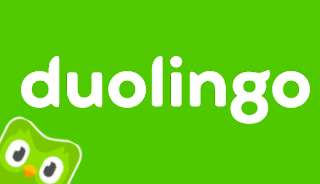
Free Version
Sign Up Today
|
$7/mo |
An app built around fun and fast lessons. We like the price tag and engagement, but this app is too gamified for us. Lots of fun, but not enough substance. |
Video: Which Language App Is Better?
In the video above, Bianca from the Guide2Fluency team compares the language learning apps from Pimsleur and Duolingo.
Editor’s Choice
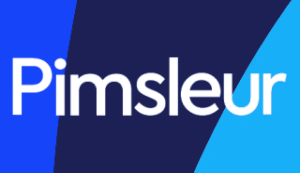
Pimsleur
- Mobile App & Desktop
- Learn Online or Offline
Pros
- Very effective learning framework based on audio lessons
- Useful driving mode feature (no screen time necessary)
- Very cool platform with modern user experience
- Fun and fast supplemental drills
Cons
- Lessons can be long and slow-moving compared to Duolingo
- Not many visuals or graphics
How Each App Works
First up, I want to provide you with a high-level overview of how each app works, before diving into each program’s strengths and weaknesses. I think this will help to provide some context for my thoughts below.
Starting with Pimsleur, their lessons are rooted in conversational practice. To start each lesson, you complete a 30-minute audio exercise, where a moderator speaking in English walks you through a guided conversation step-by-step.
You’ll listen to a few sentences in your target language, the moderator will briefly stop to explain the situation to you, and then he’ll have you participate by answering questions and repeating phrases. This 30-minute audio exercise is really the heart of the Pimsleur lessons.
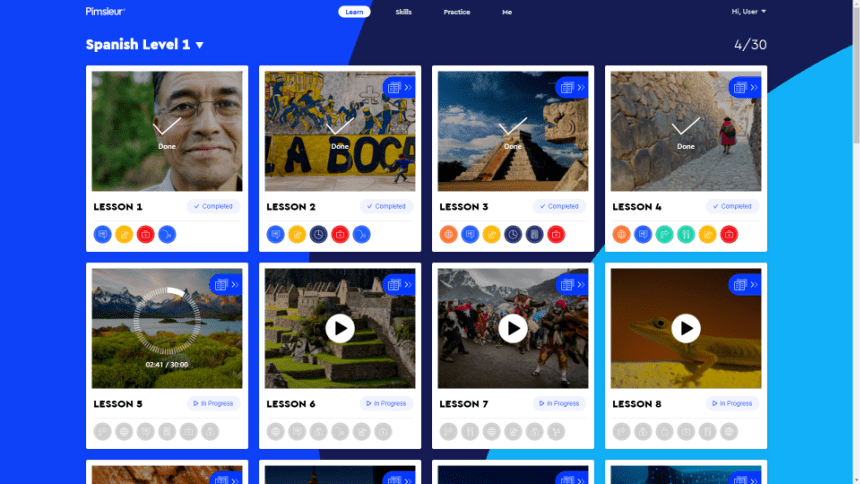
Then after the audio lesson, you review and reinforce what you just learned through a variety of drills and exercises. It is kind of like class followed by homework in a way.
These reinforcement drills include reading drills, digital flashcards, quizzes, pronunciation training, and speed games. That’s Pimsleur in a nutshell—core audio lessons followed by detailed review exercises.
Duolingo, on the other hand, is much different. Their lessons are a lot shorter and don’t have any core audio exercises like Pimsleur’s lessons.
The typical Duolingo lesson takes just 5 minutes to complete and consists of a set of rapid fire drills, such as listening drills, fill-in-the-blanks, matching pairs, verbal practice and writing full sentences.
These lessons go by extremely fast, and often you’ll end of doing two or three lessons in one sitting. So in that respect, Duolingo’s lessons are a lot leaner and less robust than Pimsleur’s lessons.
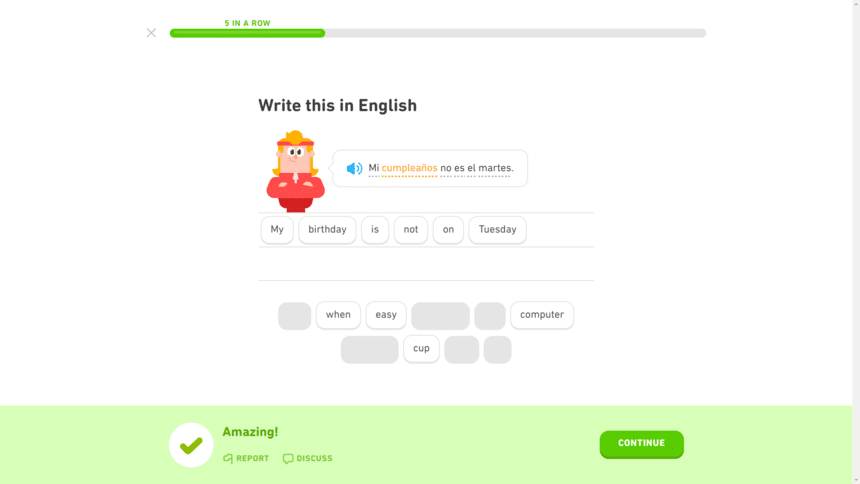
However, that’s not the full story, as Duolingo’s program is also fundamentally different. The reality is that Duolingo isn’t just about lessons.
Their program is also meant to be like a game, where you connect socially with friends, earn XP points, compete in leagues, and buy things with gems. It’s much more game-like than Pimsleur’s program.
From a high level though, that’s how the two companies compare. The key takeaway here is that the Pimsleur lessons take around 45 minutes to an hour to complete from start to finish and place a very strong emphasis on listening and speaking in the context of simulated conversations, while the Duolingo lessons are much shorter and are intended to be like fun little games.
Duolingo vs Pimsleur Cost
Before discussing the pros and cons of each app, let’s quickly talk about pricing and cost.
Duolingo is generally known for being the free app. Their basic subscription is literally free. You just download the app, make a profile, and start doing lessons. Obviously, however, there are some drawbacks with the free version, such as limited daily mistakes, tons of ads, and limitations around navigating new and old lessons.
Thus, if you want to upgrade to remove those negatives, you can sign up for Super Duolingo, their premium version. It costs $84 for an annual subscription (around $7 on a monthly basis), or they have a family plan if you want to split with friends or family. That costs $120 per year, or $10 per month.
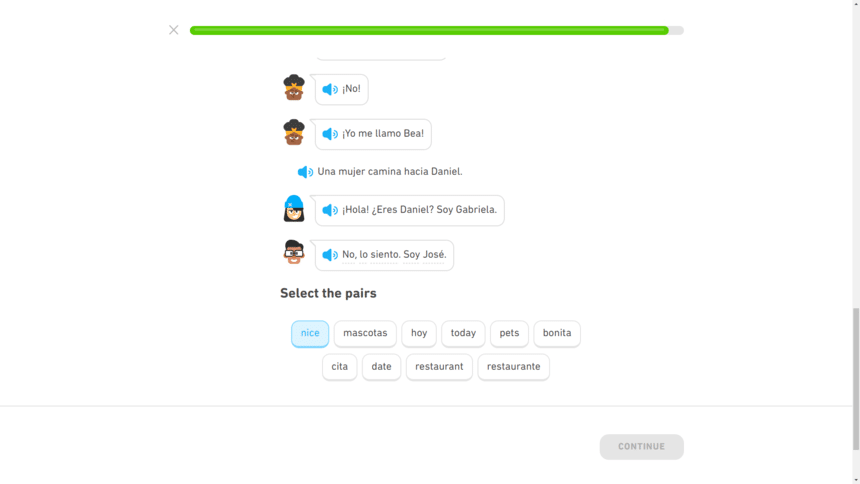
Pimsleur, on the other hand, has no free version. They simply offer a couple different monthly, pay-as-you-go subscription options. The first is Pimsleur Premium, which gets you access to one language and costs $20 per month. Then there’s Pimsleur All Access, which gets you access to all 51 of Pimsleur’s languages and costs just a dollar more per month ($21).
As a result, in terms of cost, clearly Duolingo is much cheaper. Even their paid version is about half the cost of Pimsleur.
Though I would just note that Pimsleur is pretty good about running discounts where you can lock in a lower rate, and they even have a free 7-day trial where you can test out their program before committing.
I would actually recommend doing just that before buying. Try it out for a few days and make sure you like the audio lessons.
Why Pimsleur Is Better
Now that you have an idea of how the companies compare in terms of cost and lesson format, let’s get into the major pros and cons of each program, beginning with Pimsleur.
Better For Development of Verbal Skills
The clearest advantage of the Pimsleur program is that they are much better than Duolingo at developing your verbal skills. One of the biggest accelerants of learning a language is getting immersed.
You need to hear and speak the language in heavy doses, and frequently. And the reality is that Duolingo just doesn’t give you that opportunity. They have some short stories that give you minor spurts of language immersion, but they’re nothing even close to Pimsleur.
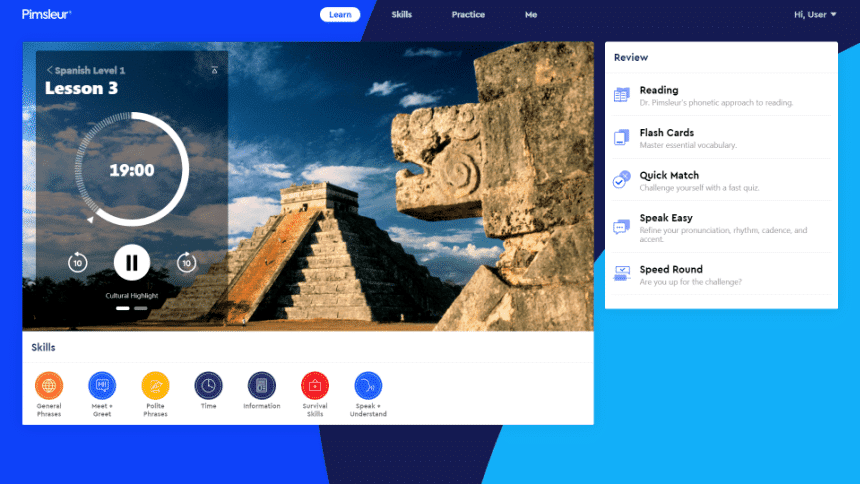
The audio lessons from Pimsleur are awesome for developing your listening and speaking skills, and you’ll build an ear for understanding the language much more quickly with their daily audio exercises. So bottom line, Pimsleur’s in-depth audio lessons are a major advantage.
Better Speech Recognition Software
The next highlight is Pimsleur’s new Voice Coach feature. Historically, Pimsleur never had any speech recognition software. It was always something missing from their program, and it was a major knock I had on them.
However, just recently they’ve rolled out this new feature called Voice Coach, which so far seems great. The tech is very accurate—more so than Duolingo even in my opinion.
Sometimes I’ve noticed with Duolingo that you can butcher a phrase and their software will still tell you you did an excellent job. In other words, Duolingo’s tech is just OK.
Pimsleur’s software seems to be really strong though. When you fudge your pronunciation, it will actually tell you.
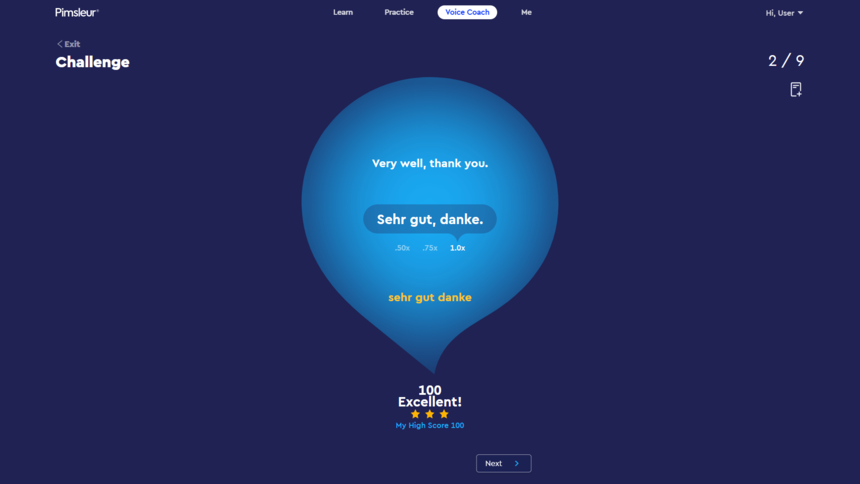
Plus, one feature that I especially like with it is “challenge mode.” When you turn this feature on, you’ll be prompted in English to say a phrase in your target language with no hint as to how to say it, so it makes you think critically about what to say, plus you still need to nail your pronunciation. It’s difficult, but very helpful.
Make Use of Downtime
Another advantage of the Pimsleur course is the flexibility of their audio lessons. Even though each Pimsleur lesson takes much longer to complete—about an hour vs 5 minutes for Duolingo—one really nice thing about the audio portion of each lesson is that you’re not tied to your phone (similar to Michel Thomas).
You don’t have to be staring at screen, matching word pairs and typing phrases in. With the Pimsleur audio lessons, you can hit play and go about whatever you’re doing.
You can do a lesson while you’re gardening, doing yoga, folding laundry, taking the dog for a walk, whatever. Basically, you can be productive with your time while still doing a lesson.
It’s a huge bonus in my eyes. And you can even do an audio lesson while driving, it’s awesome.
No Weirdo Duolingo Phrases
My last quick win for Pimsleur is that they don’t teach you weird phrases. One knock that everyone has on Duolingo is that they use some bizarre phrases in the program.
They’ll ask you to spell or repeat random stuff, such as “the turtle is wearing a blue sweater” or “my tooth is flying.”
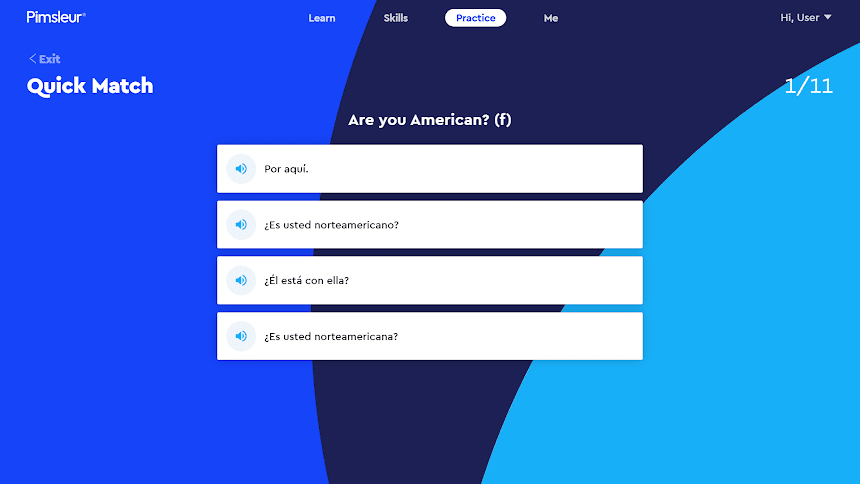
It’s a lot of nonsensical stuff that oftentimes will give you pause. It’s obviously just random word combinations that the Duolingo algorithm throws together, but it’s a little bizarre when you see it. And you don’t get that with Pimsleur—you only get real, natural phrases with them.
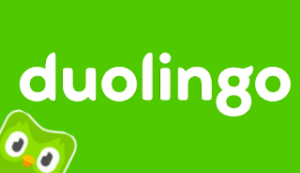
Duolingo
- Free Version
- Mobile App or Desktop
Pros
- Lessons take just 5 minutes
- The program is really fun (and somewhat addicting)
- The vocab repetition is great for language retention
Cons
- There is very little conversational or speaking practice
- Not much emphasis on grammar
- Lessons feel very shallow compared to Pimsleur’s
Why Duolingo Is Better
So that’s Pimsleur, and what I like about their program over Duolingo. Now, let’s cover why you may want to go with Duolingo over Pimsleur.
Legitimately Fun Language Learning
My first advantage for Duolingo is just how fun they make language learning. With how they gamify the experience, their app is legitimately fun, and even somewhat addicting.
It’s almost like a questing game and you get kind of hooked. You earn XP points with every lesson, you can do “friend quests,” you can spend gems you earn on tools, you compete in leagues against other users, and they neg you with that little green owl about keeping your daily streak up.
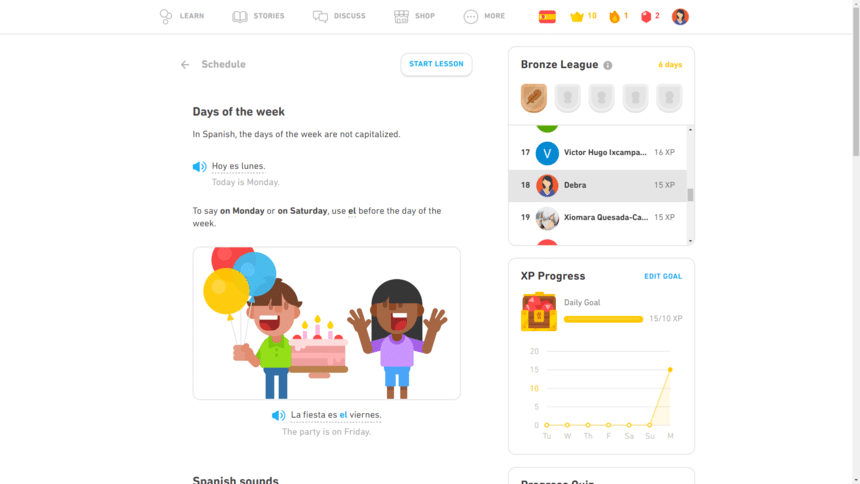
It’s just a really fun, motivating environment for learning, and I really like that aspect of this app regardless of whether you are learning French or German.
Totally Free
I really like that Duolingo offers a free version. If you’re on a tight budget, you can get most all of the benefits of the app without having to drop a cent.
It’s perfect for those looking to keep things cheap. Duolingo is literally the only language app on the market that offers a halfway decent free version. Other apps say they have free versions, but none of them are sustainable on a long term basis like Duolingo’s free version.
However, do keep in mind those limitations. You will get hit with a bunch of ads, there are caps on your daily usage with their heart system, and there are some limitations around navigating new and old lessons. Just keep that in mind with the free version.
Lessons In Under 5 Minutes
My last win for Duolingo is how short the lessons are compared to Pimsleur’s. There is a major difference here in lesson length with these two companies.
Pimsleur’s lessons take close to an hour to finish all-in, while Duolingo’s take just 5 minutes (similar to the Mondly lessons).
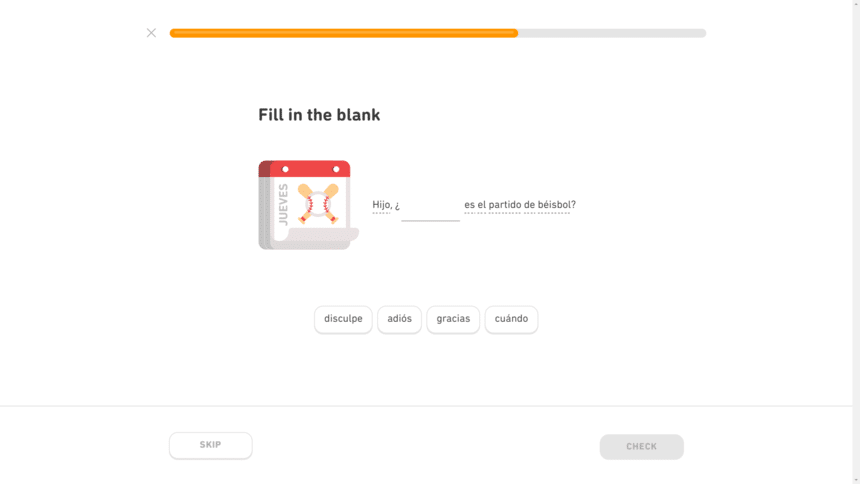
Now, you can pause Pimsleur’s lessons and always come back, but if you’re stretched for time, and only want to learn 5 minutes here or 10 minutes there, Duolingo might be a better choice given the length of Pimsleur’s lessons.
Verdict: Duolingo vs Pimsleur
Should you choose Pimsleur or Duolingo to learn a new language? Well, my verdict is pretty straightforward.
In looking at which program is more effective for actually learning a new language, it’s clearly Pimsleur. Their program is just much more robust and comprehensive. With their in-depth audio lessons and detailed reinforcement drills, you will build up to an intermediate level of fluency a lot faster with them.
With that said though, I do think there is some merit to the short, addicting Duolingo lessons, and I think the best solution of all would be to use both. Given just how different these programs are, I actually think they complement each other pretty nicely.
I would suggest using Pimsleur as your mainstay learning program—maybe doing 2 to 4 full lessons per week—and then mixing in Duolingo around that in short stints. Duolingo would be a great supplement to drive home vocab and keep you motivated.
If your ultimate goal is to become fluent at an intermediate level or higher, Pimsleur is a far superior program in my opinion. Duolingo will teach you the basics, but it alone won’t allow you to hold conversations.
If I were going to choose just one app to learn a new language between these two, it would be Pimsleur. However, I actually think these two programs work really well together. Use Pimsleur for deep audio lessons and Duolingo for fun little drills.
There is no doubt that you’ll become fluent faster with Pimsleur than Duolingo. Duolingo is great for having fun and learning the basics, but Pimsleur’s audio lessons are much better at teaching you to hold conversations.


